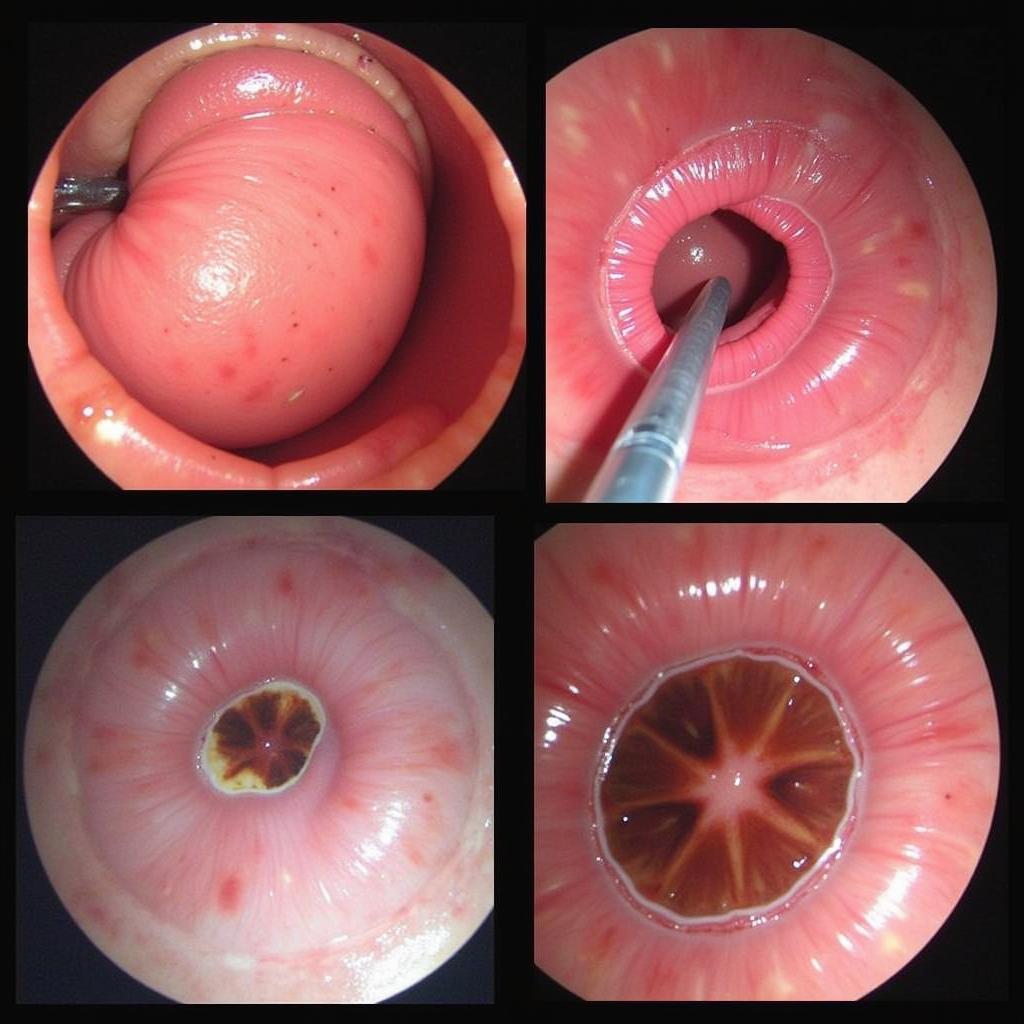Gastroscopy In Horses is a vital diagnostic procedure used to visualize the stomach’s interior. It allows veterinarians to identify and assess various gastric conditions, including ulcers, inflammation, and tumors, enabling prompt diagnosis and effective treatment. This article will delve into the importance, procedure, and benefits of gastroscopy for your equine companion.
Understanding the inner workings of your horse’s digestive system can be daunting, but gastroscopy offers a window into their stomach health. Gastroscopy can offer invaluable insights and pave the way for targeted treatment plans, ensuring the well-being of your horse. Right after a gastroscopy, medications such as Sucralfate in horses can be administered to address any identified issues.
What is Gastroscopy in Horses?
Gastroscopy, also known as equine gastrointestinal endoscopy, involves inserting a long, flexible tube with a camera attached to its end into the horse’s stomach via the nasal passage. This camera transmits real-time images to a monitor, providing a detailed view of the stomach lining and allowing veterinarians to detect abnormalities.
Why is Gastroscopy Performed?
Gastroscopy is performed for various reasons, primarily to diagnose and monitor gastric ulcers. Other indications include chronic weight loss, poor performance, recurrent colic, and abnormal eating habits. It also allows veterinarians to assess the effectiveness of ulcer treatments and identify other stomach conditions, such as tumors or inflammation. Gastroscopy allows for a comprehensive examination not only of the stomach, but also of parts of the esophagus and small intestine.
How is Gastroscopy Performed in Horses?
Before the procedure, the horse is typically fasted for 12-18 hours to ensure the stomach is empty for clear visualization. Light sedation is administered to keep the horse calm and comfortable. The endoscope is then carefully passed through the nose, down the esophagus, and into the stomach. The veterinarian can then maneuver the endoscope to examine all areas of the stomach lining. The procedure itself usually takes around 30-45 minutes.
What are the Benefits of Gastroscopy?
Gastroscopy provides a definitive diagnosis of gastric ulcers and other stomach conditions, allowing for prompt and targeted treatment. Early diagnosis and treatment can significantly improve the horse’s quality of life and prevent long-term complications. It also provides valuable information for managing the horse’s overall health and performance. For instance, understanding the presence and severity of ulcers can guide dietary changes and training adjustments. You can find more information on products like Gastrix horse which can be helpful in managing certain gastric conditions.
What are the Risks of Gastroscopy?
While generally safe, gastroscopy carries minor risks, such as epistaxis (nosebleeds) or esophageal trauma. However, these complications are rare and usually mild. Experienced veterinarians take precautions to minimize these risks, ensuring the procedure’s safety and effectiveness.
Post-Procedure Care for Horses after Gastroscopy
After the procedure, the horse will be monitored as the sedation wears off. It’s important to follow the veterinarian’s instructions regarding feeding and exercise restrictions. Any prescribed medications, such as ulcer medications, should be administered as directed. Regular follow-up examinations might be recommended to monitor the healing process and adjust treatment if necessary. Looking for information on related symptoms? You can find more on horse yawning and ulcers.
 Endoscopic View of a Horse's Stomach
Endoscopic View of a Horse's Stomach
Conclusion
Gastroscopy in horses is a crucial diagnostic tool that provides valuable insight into the health of the equine stomach. By allowing for early and accurate diagnosis of various conditions, particularly gastric ulcers, it paves the way for effective treatment and improved outcomes. While carrying minimal risks, its benefits significantly outweigh any potential complications, making it an invaluable procedure for maintaining your horse’s well-being.
FAQ
- How long does a horse need to be fasted before gastroscopy? Typically 12-18 hours.
- Is gastroscopy painful for horses? The procedure is performed under sedation, minimizing discomfort.
- How long does the gastroscopy procedure take? Approximately 30-45 minutes.
- What are the signs of gastric ulcers in horses? Signs can include poor performance, weight loss, and colic.
- How are gastric ulcers in horses treated? Treatment often involves medications to reduce stomach acid and protect the lining.
- Can gastroscopy detect other stomach problems besides ulcers? Yes, it can identify tumors, inflammation, and other abnormalities.
- How often should a horse undergo gastroscopy? This depends on the individual horse’s history and clinical signs.
Dr. Amelia Hernandez, DVM, DACVIM, an equine internal medicine specialist, emphasizes, “Gastroscopy is a cornerstone in equine digestive health management. It allows us to visualize the stomach lining directly, providing invaluable diagnostic information that guides tailored treatment strategies.”
Dr. James Carter, an equine veterinarian with over 20 years of experience, adds, “Early detection of gastric ulcers through gastroscopy significantly improves a horse’s prognosis and quality of life. The procedure is minimally invasive and provides a wealth of information that is crucial for effective treatment.”
You might also be interested in learning more about other diagnostic procedures for horses or about equine nutrition and digestive health. Explore more resources on our website to enhance your understanding of equine care.
Need assistance? Contact us 24/7:
Phone: 0772127271
Email: [email protected]
Address: QGM2+WX2, Vị Trung, Vị Thuỷ, Hậu Giang, Việt Nam.
Our dedicated customer support team is always ready to help.